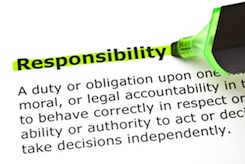 What is this so-called “witching hour” that babies have? No parent needs to have it defined, because they’ve all been through it. It’s that period of time when the baby seems utterly inconsolable. There are those who would be eternally grateful if it only lasted an hour. For some it happens around the evening mealtime, for others it’s later in the evening and for others still, it may happen in the middle of the night or early morning hours. Whatever the time of day, Baby will cry and cry with what seems like no relief in sight for the upset infant or her harried parents. Parents will (and have) tried anything they can think of to end this torment, often to no avail. This is particularly frustrating for first-time parents. So what can they do? These ten tips may not stop the baby’s crying, but they could help keep your own tears at bay.
What is this so-called “witching hour” that babies have? No parent needs to have it defined, because they’ve all been through it. It’s that period of time when the baby seems utterly inconsolable. There are those who would be eternally grateful if it only lasted an hour. For some it happens around the evening mealtime, for others it’s later in the evening and for others still, it may happen in the middle of the night or early morning hours. Whatever the time of day, Baby will cry and cry with what seems like no relief in sight for the upset infant or her harried parents. Parents will (and have) tried anything they can think of to end this torment, often to no avail. This is particularly frustrating for first-time parents. So what can they do? These ten tips may not stop the baby’s crying, but they could help keep your own tears at bay.
- Stay Calm – The most important thing for parents to do is remain calm, even if it is much easier said than done. It’s probably the most difficult thing to accomplish, especially for new parents. One thing you have to do is not take it personally. Although it may seem like it, the baby is not doing this to torture you, and your inability to soothe her is no reflection on your abilities as a parent. She’s bound to pick up on your emotions, so the more stressed you get, the more stressed she will feel. Take a deep breath, think pleasant thoughts and proceed through the event calmly.
- Be Available – If this starts happening with your baby, it won’t take long for you to recognize a pattern. Usually there’s a certain time of day that everyone is feeling tired and stressed, so this is often when the witching hour begins. Free up your schedule to make sure you’re available at that time of day. If you’re feeling rushed or distracted by other duties, then that will only make matters worse. Learn to anticipate when this is going to happen and be ready for it. This is a time when your baby needs nothing more than you.
- Establish a Routine – Devise a series of steps to go through each time this happens. By developing a routine, eventually you and the baby may find a combination that works. If nothing else, having a plan will keep your mind occupied and less concentrated on the screaming baby.
- Dress for Comfort – You’re much more likely to make the baby more comfortable if you are too. Get out of your street clothes and slip into something more comfortable. This will make it much easier to relax and snuggle with the baby.
- Get Some Fresh Air – Sometimes one or both of you could do with some fresh air. Your baby may not be fazed by the shift, but a change of scenery couldn’t hurt your emotional state. Do whatever helps you stay calm and relaxed. That may be a long, brisk walk or a casual stroll around the neighborhood. Perhaps just sitting in a porch swing or deck chair is what you need to chill out.
- Relax – A fussy baby is so stressful to parents that the baby is bound to feed off that negative energy and become even more distraught. It’s a vicious cycle that can escalate very quickly. Though it may seem nearly impossible, it’s crucial that a parent learns to relax during these episodes. Eventually, your baby will pick up on the relaxed energy and calm down.
- Cue the Music – Playing music has a dual purpose. The first is to create an atmosphere to soothe both the parents and the baby. The other is to help drown out the constant wailing. It doesn’t matter what kind of music you play, so you needn’t torture yourself with soothing lullabies unless that’s something that works. If some good old rock-n-roll helps you calm down and relax, go for it!
- Look for Distractions – Besides music, use whatever you can for distractions. Watch television, play video games, read a book or do whatever helps keep your mind off the constant crying. Sometimes you just have to wait for the baby to get over it, so it helps to have something to occupy the time.
- Invest in Headphones– If the sound of the baby crying is preventing you from staying calm and relaxed, then maybe noise reduction headphones are in order. While you don’t want to use head phones with the intent of ignoring your baby, if your ears can’t take it they can be a helpful tool allowing you to meet your baby’s needs more calmly.
- Have Patience – The final item you need in your arsenal to survive the baby’s witching hour is patience. Although it really seems like it, these episodes won’t last forever. It’s impossible for a baby to continue crying 24/7, and whatever the cause, the daily ritual will eventually diminish and come to an end. All you can do is wait it out.
Parents are quick to exchange horror stories about their baby’s fussy periods. Some can go on for months, but once they’re done, the trauma rapidly fades into a distant memory. All the sleepless nights and stress-filled days are replaced with the next stage in their little darling’s development.



